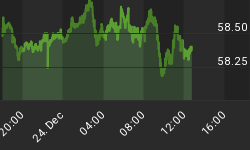The Term Auction Facility (TAF) that the Fed initiated in mid December of last year was a stroke of genius. In recent days, however, it seems to be failing to accomplish what it was designed to do -- bring interbank lending rates into line with the Fed's funds rate target. This is illustrated in Chart 1 below. When the interbank lending market seized up in August of last year, the spread between the 3-month LIBOR rate and the fed funds target rate widened significantly. After the TAF was initiated in mid December, this spread began to narrow and even turned negative on some occasions, probably because of expectations of future declines in the fed funds rate target. But the spread has widened out again in recent days to an extent certainly not justified by expectations of fed funds rate target levels in the next three months.
Chart 1
As the following table, prepared by Asha Bangalore, shows, the TAF auctions have been oversubscribed. Moreover, in the last auction on March 24, the rate at which these term funds were lent was 11.5 basis points above the discount rate. There is an obvious excess demand for funds from the TAF.
Details of Term Auction Facility
Source - http://www.federalreserve.gov/monetarypolicy/taf.htm
The Fed could grope around by trying to find the "correct" size of TAF auctions that would bring other interbank loan rates back in line with the funds rate target. But why guess? Why not eliminate TAF and let depository institutions and primary dealers both access overnight funds from the Fed at the target funds rate? But might not that lead to an excess of funds in the financial system that would cause the funds rate to trade below the Fed's target? It sure could. But the second part of my proposal would be for the Fed to stand ready to borrow from depository institutions at its funds rate target. If the funds rate were to slip below its target, depository institutions and primary dealers could lend to the Fed at the target funds rate rather than lending to a private counter party at the lower rate. The Fed could take the same collateral in these new market-initiated reserve injection/draining operations as it does in the TAF auctions, taking appropriate haircuts on non-U.S. Treasury securities collateral. If the Fed were borrowing from depository institutions and primary dealers, it could offer Treasury collateral to the lenders.
There is another issue that has gained attention of late -- the Fed's running down of its U.S. Treasury securities holdings. As shown in Chart 2 below, the Federal Reserve's portfolio of U.S. Treasury securities has gone down from $790.8 billion on August 8, 2007 to $660.5 billion on March 20, 2008 -- a decline of $130.3 billion. If the Fed were to continue injecting reserves into the banking system in exchange for non-Treasury collateral, it might run out of Treasury collateral with which to drain reserves in order to prevent the funds rate from falling below its target. A solution to this, which might require some new legislation, would be for the Treasury to issue marketable securities directly to the Fed in exchange for some of the additional non-Treasury collateral that the Fed was acquiring through its reserve-injection operations.
Chart 2
















